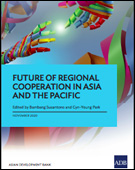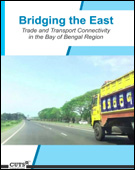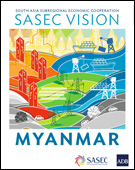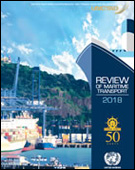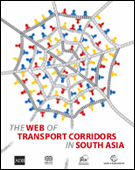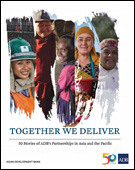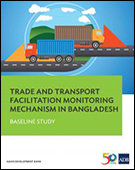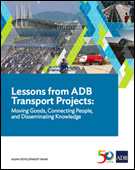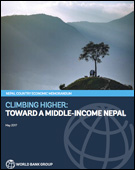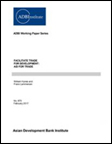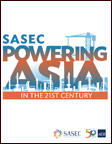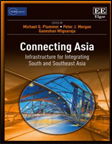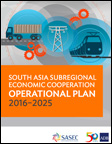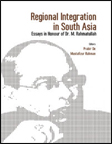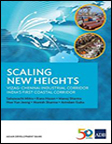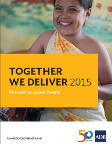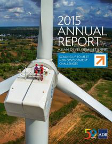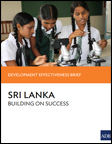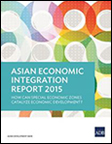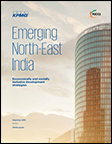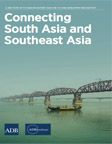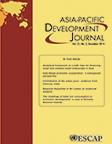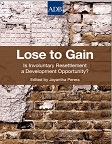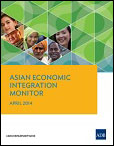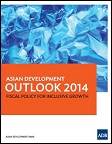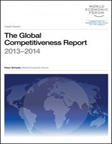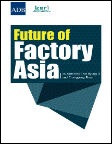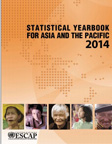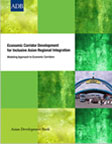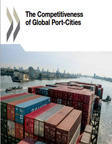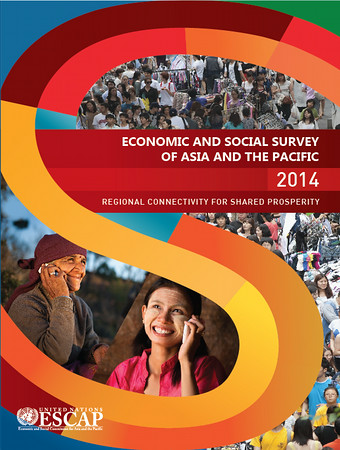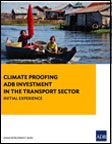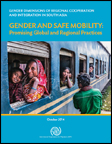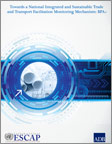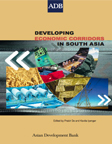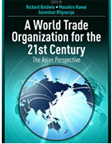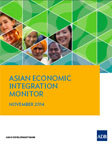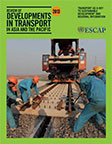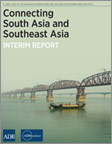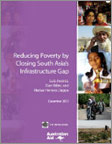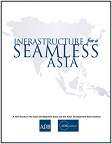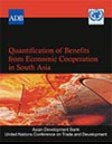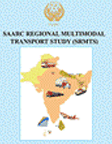Transport Results
Transport demand in South Asia continues to grow as the region's economies expand, alongside rising incomes, increased consumption, and demand for travel. In South Asia, transport systems have largely developed within a national context, creating need to develop transport infrastructure that goes beyond borders, and addresses capacity constraints, service quality, and safety. SASEC support for the transport sector aims to facilitate cross-border connectivity by developing multimodal transport systems, including road transport, railways and ports, that are aligned with the development of markets.
TRANSPORT REGIONAL & INTERNATIONAL
PUBLICATIONS
total items: 46The book reviews how Asia and the Pacific can leverage regional cooperation to realize the region’s economic potential. Subregional initiatives such as the South Asia Subregional Economic Cooperation (SASEC) Program could support regional public goods, including road, energy, communication, and railway networks. SASEC is also promoting the development of economic corridors, the strategy for which was introduced in the SASEC Operational Plan 2016–2025.
Bangladesh, Bhutan, India, and Nepal Motor Vehicles Agreement aims to reap the trade and economic potentials of the countries of South Asia. This study identifies hurdles to the successful implementation of the agreement through evidence-based advocacy and dialogue. The study highlights issues related to infrastructure, political economy, gender, and livelihood.
Source: CUTS International
Myanmar serves as a land bridge between South Asia, Southeast Asia, and East Asia. This book identifies regional and subregional opportunities for Myanmar to harness natural and human resources, industrial potential, and infrastructure connectivity as part of the South Asia Subregional Economic Cooperation (SASEC) program. SASEC Vision – Myanmar serves to supplement the 2017 SASEC Vision document, which articulates shared aspirations of the SASEC countries and sets the path to achieve these through regional collaboration.
Around 80% of volume of global trade are carried by sea and are handled by ports. According to this report, global maritime trade experienced its fastest growth in five years. Prospects for maritime trade are bright. However risks exist in the form of trade frictions, the global energy transition, etc. The report states that technological advances including artificial intelligence, blockchain applications, the internet of things, and autonomous ships and drones could potentially boost efficiency in global shipping.
This book looks at how the economic benefits of investments in transport corridors could be amplified and how negative impacts could be minimized in South Asia. The book introduces an appraisal methodology that looks at the web of interconnected elements around corridors and assesses proposed corridors according to their potential to bring wider economic benefits (WEB). It uses case studies of past and recent corridor initiatives, and presents a simulation of the impact of the proposed Kolkata-Dhaka corridor.
This special edition of Together We Deliver tells 50 stories that highlight the importance of good partnerships in Asia and the Pacific in meeting complex development challenges. In South Asia, ADB has supported infrastructure development and social programs, helping lift people out of poverty in a diverse, rapidly urbanizing subregion. The South Asia Subregional Economic Cooperation Roads Improvement Project, for instance, is set to widen 160 kilometers of Nepal’s East–West Highway, which connects Nepal to India. The improved roads will provide faster and better access to social services and economic opportunities, and will facilitate national and regional integration.
Source: Asian Development Bank
This report synthesizes the business process analysis conducted on the export of plastic kitchenware and tableware from Bangladesh to Bhutan through Burimari land port, and the import of lentils from Nepal to Bangladesh through Banglabandha land port, as well as studies on trade corridors and border crossings in Bangladesh, to quantify current trade and transport facilitation in Bangladesh through a set of indicators. Findings of the study reveal bottlenecks to trade, including costly one-time procedures for a new trader, numerous documents and copies required to complete export and import processes, and low speed along the trade corridors. This report includes specific short-term and long-term policies to improve Bangladesh’s trade and transport facilitation.
Source: Asian Development Bank
This publication shares 20 case stories from the Asian Development Bank bearing practical lessons for transport projects across Asia and the Pacific region under different socioeconomic and political situations. The book includes reports on improving aviation in Bhutan, working on computerized transport and trade logistics in Nepal, and constructing Sri Lanka's Greenfield Highway, and the role policy plays in those projects. It also draws lessons from how India's road development increased rural communities' access to public services and economic opportunities, and how participatory processes in selecting road improvement projects in Bangladesh provide a model for long-term plan for road maintenance.
Source: Asian Development Bank
Nepal is experiencing modest growth but brisk poverty reduction. It has halved the poverty rate in just seven years and witnessed an equally significant decline in income inequality. Yet Nepal remains one of the poorest and slowest-growing economies in Asia, with per capita income falling behind its regional neighbors. The report discusses the need for comprehensive policy reform to address the country’s challenges in becoming a lower-middle-income country by 2030. The report outlines suggested reforms to facilitate greater investment and improved productivity, build new sources of growth, and deepen human capital.
Source: World Bank Group
The Aid for Trade program has been providing support to developing economies in tackling obstacles to growth through better facilitation of trade in the last 10 years. Since its launch in 2006, a total of $308 billion has been disbursed to finance aid-for-trade programs and projects, which are working to reduce trade and transport costs, promote trade expansion, and achieve economic and social objectives. As high trade costs persist in keeping developing countries from fully exploiting their trade and development potential, the Aid for Trade program remains highly relevant, and will help developing economies, including landlocked and small and vulnerable economies, achieve the 2030 Agenda for Sustainable Development.
SASEC Powering Asia in the 21st Century defines the SASEC Vision, framing the SASEC partnership in the larger context of the subregion’s collective growth and development by articulating shared aspirations of the SASEC countries (Bangladesh, Bhutan, India, Maldives, Myanmar, Nepal, and Sri Lanka), and setting the path to achieve these through regional collaboration. The SASEC Vision lays out a subregional transformative opportunity by leveraging natural resources, promoting industry linkages for the development of regional value chains, and expanding the region’s trade and commerce through the development of subregional gateways and hubs. This document is supplemented by SASEC Vision – Myanmar.
This book contains background papers prepared for the Asian Development Bank and the Asian Development Bank Institute joint study, 'Connecting South Asia and Southeast Asia.' It emphasizes the potential contribution to growth that greater connectivity—through better transport and energy infrastructure and improved soft infrastructure, including trade facilitation—between South Asia and Southeast Asia can foster. With benefits including greater participation in global supply chains for South Asia; lower trade costs; and increase in inter- and intraregional trade, the book underscores that, at a juncture where closer regional integration can secure sustainable and inclusive growth for economies in the two regions, specific policies should be examined and considered to enable both regions to maximize gains from greater integration.
Source: Michael G. Plummer, Peter J. Morgan, Ganeshan Wignaraja, eds.
The SASEC Operational Plan 2016–2025 embodies the strategic objectives and operational priorities of the SASEC Program for the next decade. It expands the SASEC Program's focus beyond intraregional cooperation to developing links with Southeast and East Asia, thus widening the scope of transport, trade facilitation, and energy cooperation. Economic and industrial corridor development, which will arise from improved connectivity, has been introduced as a priority initiative. SASEC 2025 is supported by a list of potential projects to be implemented in the subregion during 2016-2025, that will advance the SASEC goals of multi-modal connectivity, energy security and the growth of regional energy markets, and increased intra- and inter-regional trade. An update to the operational plan was published in 2020.
Source: Asian Development Bank
Building efficient transport linkages within and across countries in South Asia is crucial to development of production networks and value chains, and promotion of trade and investment. This collection of essays honors Dr. M. Rahmatullah, who championed the cause of multimodal connectivity in South Asia for seamless movement of goods across Asia, and dreamt of building an integrated South Asia through corridors and gateways to be connected with pan-Asian transport networks. A valuable resource for policymakers, academics, and practitioners working on issues of South Asian regional integration, this book looks at progress made on facilitating trade and enhancing connectivity in the region, assesses policy priorities, implementation imperatives, and emerging challenges to South Asian trade and integration, and gives recommendations on further strengthening South Asian integration.
Source: Prabir De and Mustafizur Rahmant
This book provides policymakers with a guide to understanding India’s economic corridor development strategy by examining its first coastal economic corridor, the East Coast Economic Corridor. It lays out the plan for its first phase, the Vizag–Chennai Industrial Corridor, which can help unify the country's domestic market, integrate its economy with Asia's global value chains, and support the 'Make in India' initiative to spur manufacturing through construction of world-class infrastructure supported by a major transport network, connecting urban clusters complemented by vibrant industrial zones, and encouraging a favorable and competitive environment for businesses to thrive, and facilitating efficient movement of goods and people. As a policy instrument and development strategy, economic corridors can help fast-track inclusive and sustainable economic growth, stimulate rapid industrialization and increase productivity, promote investments, and expand regional connectivity.
Source: Sabyasachi Mitra, Rana Hasan, Manoj Sharma, Hoe Yun Jeong, Manish Sharma, and Arindam Guha
This book gathers 14 stories from across Asia and the Pacific that highlight successful projects demonstrating development impact, best practices, and innovation. It includes stories from Bangladesh, India, Nepal, and Sri Lanka that illustrate how the Asian Development Bank (ADB) and its partners, with their combined expertise, problem-solving abilities, and finances lift people’s living standards and solve a variety of pressing development problems. In India, Mumbai’s new Chhatrapati Shivaji International Airport is a shining example of how public–private partnerships can help solve the country's infrastructure deficit, increasing efficiency in cargo and passenger handling and saving on energy costs. In Bangladesh, partnership between ADB and nongovernment organizations is bringing health care to the urban poor. In Nepal, a Skills for Employment project is helping those caught in poverty improve their job prospects. In Sri Lanka, ADB and its development partners helped provide a fresh start through electricity, education, health services, and water sanitation.
Source: Asian Development Bank
The Asian Development Bank's (ADB) 2015 Annual Report provides a complete picture of ADB’s performance in the reporting year. In 2015, South Asia became the fastest-growing regional economy in Asia and the Pacific, and ADB's assistance to the region approached $3.80 billion in combined loans and grants for 22 projects and $37.26 million in grants for technical assistance. Through the South Asia Subregional Economic Cooperation (SASEC) Program, ADB also continued to drive tighter integration in the region, enhancing cooperation and boosting connectivity with initiatives including helping finalize the Bangladesh-Bhutan-India-Nepal and India-Myanmar-Thailand Motor Vehicle Agreements, Bangladesh-India power grid upgradation, preparation of high-priority transport projects in Bangladesh, and analytical studies for India's East Coast Economic Corridor.
Source: Asian Development Bank
Over the years, the Asian Development Bank (ADB) and its many partners in Sri Lanka have worked together to realize the goal of changing the country’s status from low to middle income. With Sri Lanka moving toward becoming an upper middle-income country in a few years, challenges lie on the road ahead. This publication provides an overview of recent ADB support toward Sri Lanka's development in diverse areas including transport, energy and education, and discusses how the Government of Sri Lanka and ADB will transition their partnership to push the country to the next level of prosperity.
Source: Asian Development Bank
The 2015 Asian Economic Integration Report reviews regional economic cooperation and integration in Asia, providing updates on recent developments affecting trade policy, including the conclusion of Trans-Pacific Partnership, relatively large number of proposed FTAs--with India among the major proponents, and progress of trade facilitation in Asia through the World Trade Organization's Trade Facilitation Agreement. Trade facilitation in developing Asia has significantly advanced over the last several decades, with a total of 48,000 kilometers of regional transport corridors along major supply chains improved. From 1992 to 2014, developing Asia together with ADB and its partners have mobilized $38.4 billion for 186 regional transport and trade facilitation investment projects under three subregional programs—including the South Asia Subregional Economic Cooperation (SASEC) program. This also issue includes a special chapter highlighting how special economic zones can catalyze economic development, with the right business environment and policies in place.
Source: Asian Development Bank
This report highlights opportunities that can be explored in India's North East region, including tourism, energy, and infrastructure, to enable the North East to develop economically, while contributing to India's development as a whole. It takes stock of recent initiatives, including the 'Look East' Policy and the Bangladesh-Bhutan-India-Nepal (BBIN) subregional grouping, and identifies areas for improvement to propel inclusive growth. Harnessing the region's full potential would require upgrading the region's infrastructure. Significant investments are needed, since lack of connectivity and inadequate infrastructure present developmental bottlenecks, contributing to the slow pace of growth in the North East. The report presents policy recommendations and suggested actions, and a forecast for India for 2021-2022.
Source: KPMG India and FICCI
This book analyzes how closer regional connectivity and economic integration between South Asia and Southeast Asia can benefit both subregions. It aims to build a broad case for increased connectivity between the two regions and identify specific projects that have high potential to fulfill this objective. This joint study focuses on both “hard” infrastructure and associated “soft” infrastructure, including tariffs and non-tariff barriers, trade and transport facilitation, energy trading, and infrastructure investment and financing. It further provides a canvas for considering strategic cross-border infrastructure investments and policy reforms.
Source: Asian Development Bank Institute and Asian Development Bank
This publication commemorates 25 years of Nepal Resident Mission’s opening and provides an overview of the Asian Development Bank’s (ADB) operation in Nepal over the years. It highlights ADB-assisted projects and Nepal’s association with the South Asia Subregional Economic Cooperation (SASEC) initiative, to further enhance the nation’s role in regional and world trade. These projects aim for regional energy cooperation (SASEC Power System Expansion Project), as well as subregional cooperation and connectivity in the transport sector (SASEC Road Connectivity Project and Subregional Transport Facilitation Project).
Source: Asian Development Bank
The paper "Indo-Nepal Economic Cooperation: A Subregional Perspective" published in this issue of the Asia-Pacific Development Journal (APDJ) explores how subregional engagement among bordering regions can stimulate economic cooperation among countries in South Asia. It assesses the current status and potential of greater integration between India and Nepal, and develops a SWOT (strength-weakness-opportunity-threat) analysis reflecting on the need for a subregional approach to promotion of regional cooperation. APDJ, published twice a year by the Macroeconomic Policy and Development Division of UNESCAP, provides a platform for exchange of knowledge, experience, ideas, information and data on all aspects of economic and social development issues and concerns facing the region.
Source: United Nations Economic and Social Commission for Asia and the Pacific
This book examines how displaced persons recover from physical and economic displacement in the South Asian context using resettlement case studies from India, Nepal, and Sri Lanka. Despite improvement in national policies and willingness to enforce good practices, the level of involuntary resettlement good practices in South Asia varies widely. There is need for greater commitment, legal reforms, and adequate resources to ensure that involuntary resettlement becomes a development opportunity for all project-affected persons.
Source: Perera, Jayantha (ed.)
The Asian Economic Integration Monitor, a semiannual review of regional economic cooperation and integration in Asia covers regional economic updates, intraregional trade, financial integration and investment, and the importance of disaster risk financing instruments. The Theme Chapter: Insuring Against Asia’s Natural Catastrophes discusses market solutions and the role of government in developing disaster risk financing and strengthening financial resilience. The economic update section encourages strengthening regional cooperation in surveillance and financial safety nets, and deepening economic links. Inter-subregional trade between each subregion and the rest of Asia is rising, except in South Asia, while financial integration continues to deepen across the region.
Source: Asian Development Bank
The Asian Development Outlook, ADB’s flagship economic publication provides comprehensive macroeconomic analysis in Asia including growth projections by country and region. The Asian Development Outlook 2014 forecasts that developing Asia will grow 6.2% in 2014 and 6.4% in 2015. South Asia remains one of the slowest growing subregions—although growth is forecast to improve by 5.3% in 2014 and 5.8% in 2015.
Source: Asian Development Bank
The World Economic Forum's Global Competitiveness Report offers a platform for dialogue among key stakeholders in government, business, and civil society on improving the living standards of the world’s citizens through insights on institutions, policies, and factors that drive or hinder growth and national competitiveness. Using the Global Competitiveness Index (GCI), twelve pillars are considered, including infrastructure, which, among factor-driven economies of Bangladesh, India, and Nepal, impacts the location of economic activity, reduces distance between regions, and enables production and faster flow of goods. Market size—essential for countries with small domestic markets—is another key index measured. The 2013-2014 report also includes an assessment of newly-covered Bhutan, and an analysis for the drop in India's GCI ranking.
Source: Klaus Schwab
This volume, co-published by the Asian Development Bank and the Korea Economic Research Institute, reflects one of the broad thematic sessions of the Seoul conference, Beyond Factory Asia. It assesses the challenges and sustainability of the Factory Asia model – supplying from the East and consuming in the West – and provides suggestions and strategies on effective management of these concerns. The volume further analyzes obstacles in the success of Factory Asia, its speed in expanding its own domestic and regional markets, and its progress in upgrading competitiveness in the manufacturing sector. The new Factory Asia must nurture new sources of growth in the region and focus on regional economic integration.
The Statistical Yearbook contains comparative statistics and facts about the 58 regional members and associate members of the Economic and Social Commission for Asia and the Pacific. It includes brief analyses of 32 key development features such as energy supply and use, international trade, and transport, among others. In energy, the region’s production structure is highly resource-intensive, although per capita energy use is low. The section on international trade recommends focusing on raising domestic value-added rather than increasing gross exports in Asia and the Pacific. Finally, investment in environmentally sustainable transport is encouraged.
Source: United Nations Economic and Social Commission for Asia and the Pacific
The experience of economic corridor development in different regions across continents is examined in this publication, which shares detailed models that assess the economic impact of corridor investments. The South Asia Subregional Economic Cooperation (SASEC) model highlights the regionally inequitable impact of corridor projects and focuses on the incremental effects of infrastructure investments in terms of gains in per capita income.
Source: Asian Development Bank
This book explores the inter-linkages between ports and urban development. It provides an internationally comparative benchmark study of port cities. Case-studies of selected port-cities provide detailed analysis of port performance, port impacts, policies, and governance. The least time-efficient ports are located in Africa and South Asia. Mumbai, India, for example – one of the selected port-city profiles – lacks port infrastructure and suffers from heavy regulation.
Source: Organization for Economic Co-operation and Development
This 2014 edition of UNESCAP's flagship publication emphasizes the importance of furthering regional connectivity in Asia-Pacific—a region which, despite significant reductions in poverty levels, is now witnessing rising income inequality, both within and between countries. It calls for driving the region's growth by exploiting the interdependence and synergies of five elements: trade and transport connectivity, ICT networks, energy connectivity, people-to-people networks, and promotion of knowledge-based economies, and advocates approaching connectivity as a regional public good.
Source: UNESCAP
This publication reviews and documents experiences in transport investments and identifies opportunities to further mainstream climate risk management in transport investment projects. It also presents case studies where climate risk and vulnerability assessment were carried out and climate proofing measures have become an integral component of project design.
Source: Asian Development Bank
This technical report analyzes global practices related to gender equality and safe migration, and their applicability to the context of South Asia. "Hard" aspects, such as physical infrastructure and equipment including border infrastructure, passenger holding facilities and surveillance cameras, and "soft" aspects, such as regional, bilateral and/or country-specific policies, programs, mechanisms and institutional linkages of safe mobility, are presented. The report also presents national policies and procedures that promote safe mobility. Given the lessons drawn from the reviewed policies and practices, it highlights the need for stronger evidence-based approaches in understanding the complex experience of women migrant workers, and identifies the need for more regular peer exchange through periodic regional dialogues of key stakeholder groups.
This ADB-UNESCAP publication aims to provide guidance to the countries of the Asia-Pacific region on establishing a sustainable trade and transport facilitation monitoring mechanism (TTFMM). Underpinning the TTFMM is the integrated methodology of Business Process Analysis Plus (BPA+), which is built on the Business Process Analysis methodology, and supplemented by Time Release Studies (TRS) and Time-Cost-Distance (TCD) methodologies. It is envisaged that establishment of TTFMM will enable effective monitoring and enhancement of national trade facilitation on a continuous basis and in a sustainable manner.
Source: UNESCAP
This book describes key conditions for transforming transport corridors into economic corridors and establishes the rationale for developing economic corridors, and the related benefits from production value chains along those corridors. It further emphasizes the significant potential of economic corridors in South Asia, particularly those being developed under the South Asia Subregional Economic Cooperation Program. The chapters highlight the impact of trade barriers on bilateral trade and present case studies on trade facilitation in South Asia. Countries in the subregion would benefit by working closely to exploit the full economic potential of economic corridors.
Source: Asian Development Bank
This statistical yearbook devoted to market access for goods contains a comprehensive compilation of tariff parameters for each of the 160 World Trade Organization members, plus a number of other countries and customs territories where data is available. Each country profile presents information on tariffs imposed by each economy on its imports, including an analysis of market access conditions in its major export markets. Statistics for all countries allow easy comparisons between countries and sectors, as well as between bound and applied tariffs.
This Asian Development Bank Institute book examines key changes in the world trading system and explores policy implications for Asia. Through a compilation of essays from prominent international and Asian trade experts, this book presents interaction of market forces and trade regulation. Lessons from the Asian experience offer new approaches and economic policies to sustain growth, presenting the World Trade Organization as a forum to improve regional and global trade governance in the 21st century.
Source: Richard E. Baldwin, Masahiro Kawai, Ganeshan Wignaraja (Eds.)
This AEIM review of recent economic performance highlights the need for Asia to rebalance its sources of growth toward domestic and regional demand. It also shows a resilient Asia with rising GDP growth in South Asia. This issue includes a Special Chapter: Regional Financial Integration and Crisis in Asia and Europe – A Comparative Analysis. It presents Asia’s future path of integration as different from that in Europe. Asia will continue to strengthen efforts to harmonize rules and regulations in the financial sector and further unilateral trade and investment, while Europe is more likely to strengthen regional institutions to ensure recovery and better the monetary union.
Source: Asian Development Bank
While transport has been an essential element in the rapid growth and economic development of Asia and the Pacific, the sector is now at a crossroads more than ever before. Rocketing demand for transport services is putting extreme pressure on existing infrastructure at a time when public budgets are constrained and awareness about the negative externalities of transport activities is growing.
Source: United Nations
This joint ADB-ADBI study focuses on how improved physical connectivity (infrastructure) and associated institutional connectivity (software) can enhance more effective economic integration between the two subregions. The report reviews economic ties, identifies issues and constraints, and explores better connectivity and closer economic integration. It also examines major developments in South Asia-Southeast Asia trade and investment, economic cooperation, role of economic corridors, and regional cooperation initiatives.
Source: ADB and ADBI
This report takes a critical look at inter-and intra-regional infrastructure of South Asia and explores inequality of access across space and time. It gives an approximate total cost of regional infrastructure needs and investment trends in the South Asia region, along with a proposed framework on ranking of infrastructure needs. The report also examines better usage of existing resources and policy options to help the poorest gain better access to infrastructure. Finally, it recognizes the enormity of infrastructure deficiencies in South Asia and acknowledges that a good mix of infrastructure investment and supportive reform implementation will enable the region to close the infrastructure gap.
The study reviews regional infrastructure being enhanced through regional cooperation in Asia and examines major issues and challenges. It suggests a framework for pan-Asian infrastructure cooperation, anchored on a long-term vision of creating a seamless Asia that will not only enhance the region's competitiveness and extend its global reach, but also help reduce poverty and promote greater environmental sustainability.
Source: Asian Development Bank / Asian Development Bank Institute
In today's globalized world where the economic fates of nations are inevitably linked, weathering the present economic storm for Asia will increasingly depend on harnessing regional dynamics particularly on the trade front. Pan-Asian Integration: Linking East and South Asia is a rich volume of perspectives from leading thematic experts on regional patterns of trade and investment, trade-related infrastructure, trade facilitation, among others.
Source: Asian Development Bank
The study examines the implication of the South Asian Free Trade Agreement (SAFTA) on South Asian countries and on the region as a whole, employing both a quantitative and qualitative assessment on the outcomes of SAFTA. The research aims to provide support in the formulation of concrete policy measures for trade to ensure greater gains for the region, while at the same time mitigating potential negative impacts. Economic and social assessments through analytical tools and rational causal chain analysis further enrich the study.
Source: Asian Development Bank / United Nations Conference on Trade and Development
SAARC Regional Multimodal Transport Study - SRMTS
Source: SAARC Secretariat

